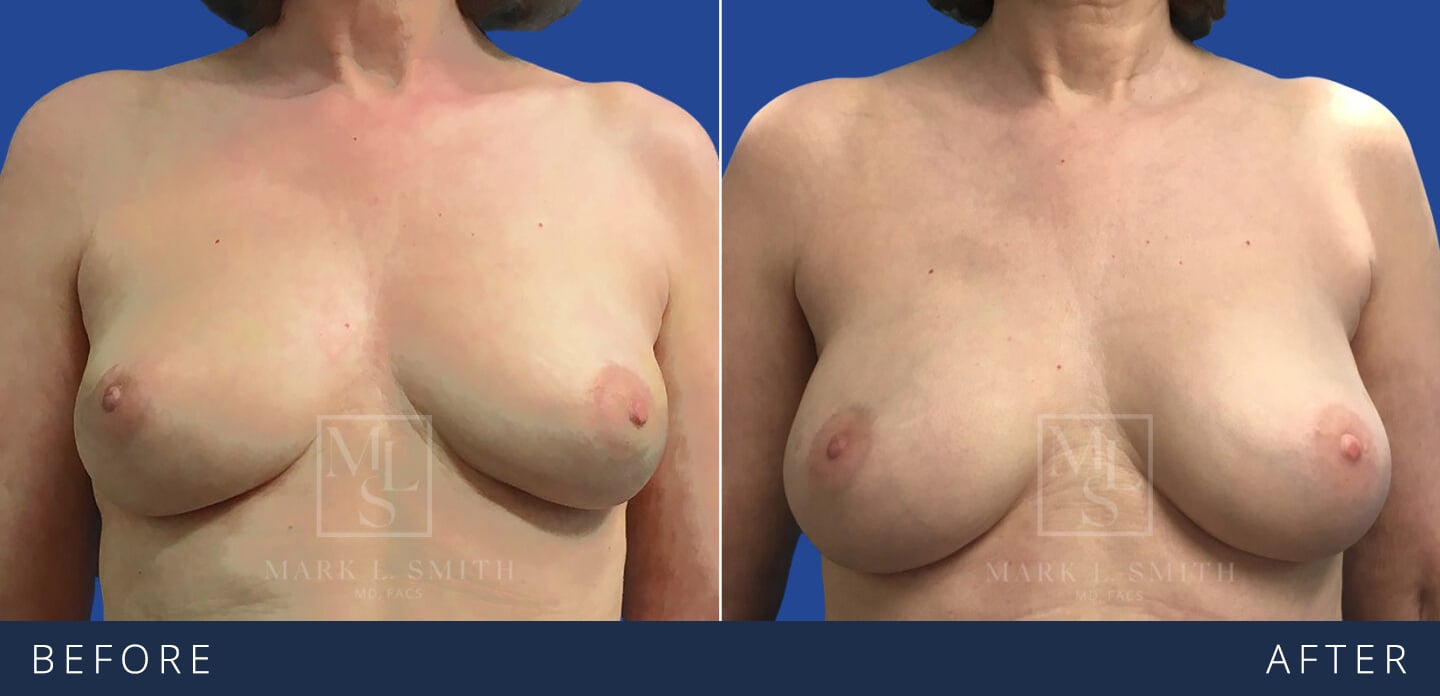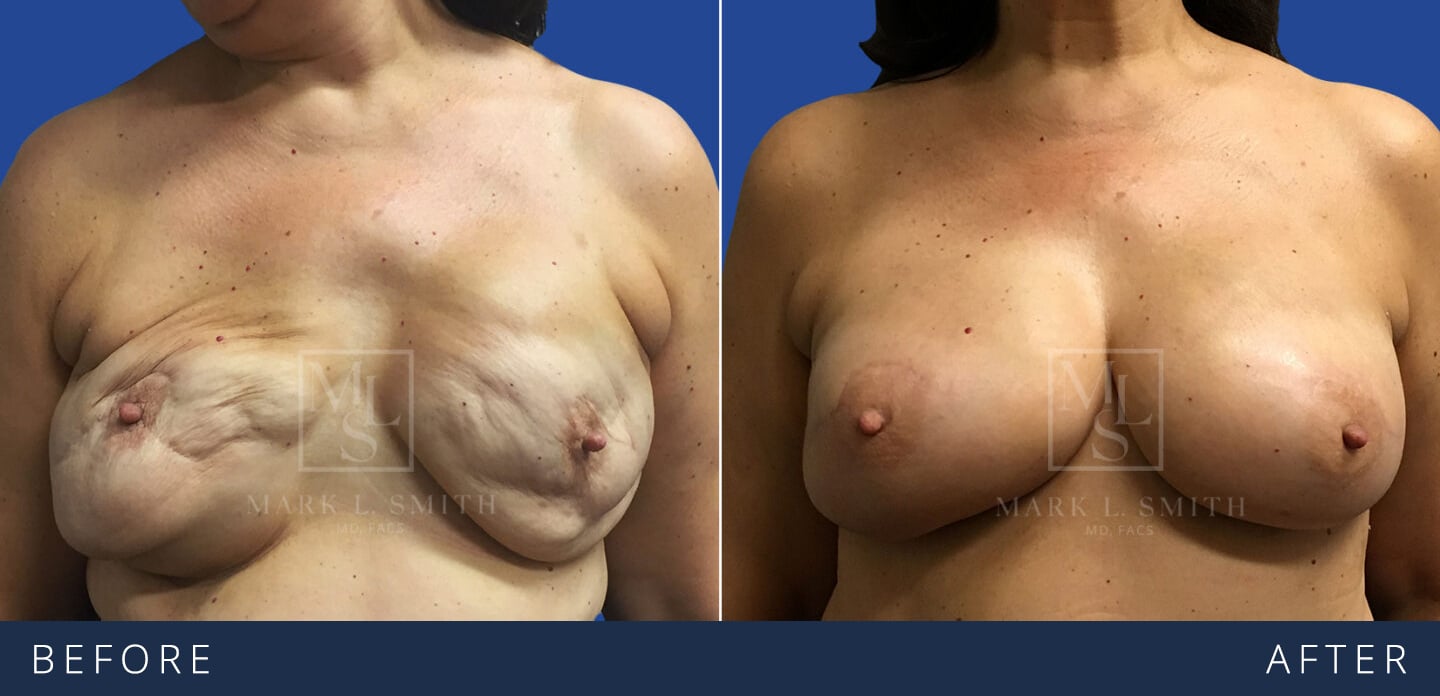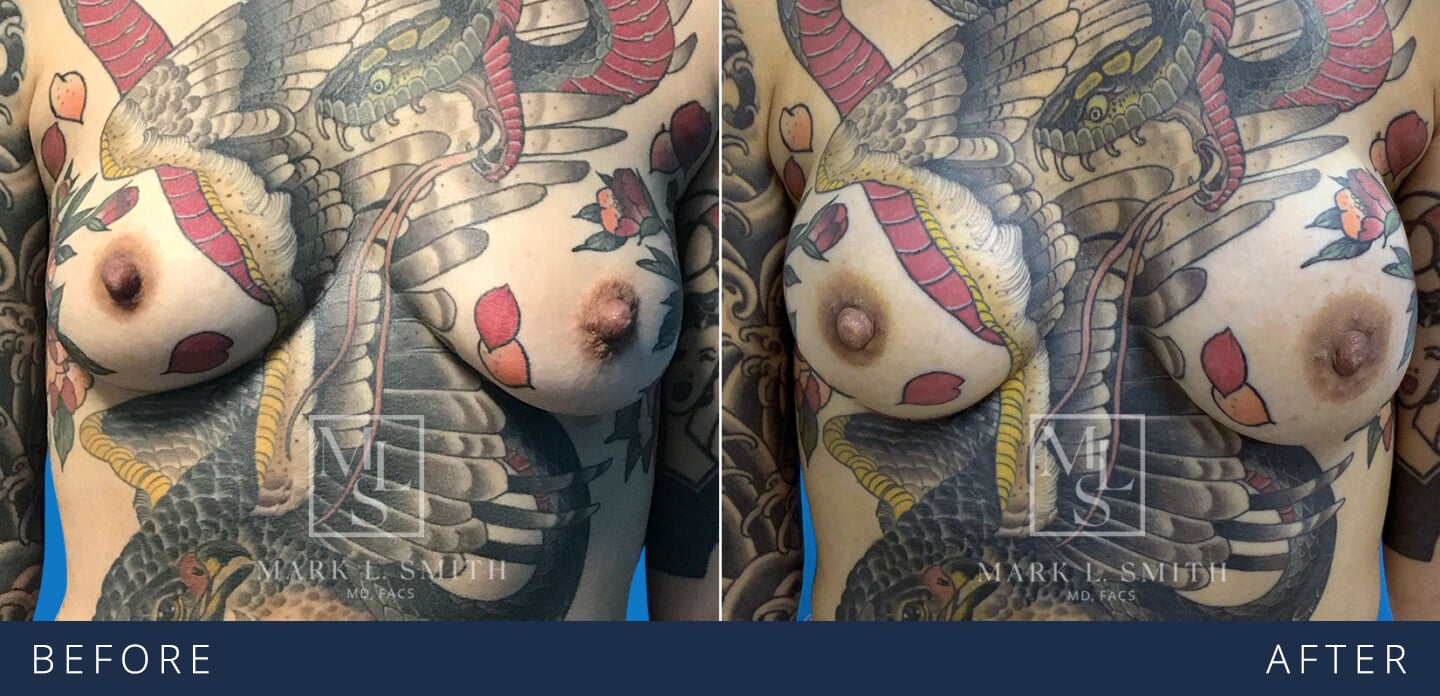Women have many options when it comes to the implant they select for breast reconstruction. Implants come in a range of volume and profiles designed to complement different body shapes and sizes.
The two primary types of breast implants are saline filled or silicone filled. All implants have an exterior silicone shell. The implant is then filled with either saline (salt water) or silicone gel. Saline implants have a watery feel and can be prone to rippling, which creates wavy lines under the skin. However, if they leak, the body will just absorb the saline fluid and the patient will notice a gradual reduction in the breast volume. Silicone implants come in a range of densities and usually feel more like natural breast tissue. However, if the implant leaks the silicone will not be absorbed so a patient may be unaware. It is best to remove and replace any leaking implant so that the silicone doesn’t migrate outside the implant pocket. Therefore, the FDA recommends imaging with MRI or ultrasound, at 5 years and then every 2-3 years to assess if there is any leakage.
Implant shape is also a consideration. Implants are either round or teardrop-shaped. Round implants offer more volume at the top of the breast while the teardrop is considered to have a more natural look. Teardrop shaped implants require surface texturing to prevent them from rotating in the breast pocket. Some textured implants have been associated with a rare type of lymphoma called Breast Implant Associated Anaplastic Large Cell Lymphoma (BIA-ALCL). Dr. Smith no longer uses these types of textured implants and many patients come to him for revision surgery to replace them. If you are uncertain if you have these types of implants, call your physician. Round implants are generally not textured and therefore have a much lower risk of BIA-ALCL.
Dr. Smith can help you determine which factors are most important when selecting your breast implants and advise you on implant size and profile to best complement your body shape.


















